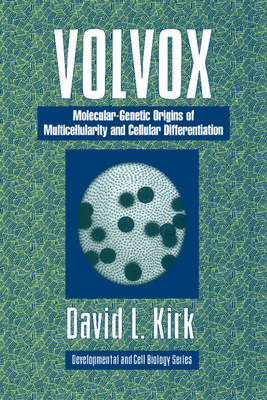
- Afhalen na 1 uur in een winkel met voorraad
- Gratis thuislevering in België vanaf € 30
- Ruim aanbod met 7 miljoen producten
- Afhalen na 1 uur in een winkel met voorraad
- Gratis thuislevering in België vanaf € 30
- Ruim aanbod met 7 miljoen producten
Zoeken
Volvox
A Search for the Molecular and Genetic Origins of Multicellularity and Cellular Differentiation
David L Kirk
€ 126,95
+ 253 punten
Omschrijving
The central thesis of this book is that Volvox and its unicellular and colonial relatives provide a wholly unrivaled opportunity to explore the proximate and ultimate causes underlying the evolution from unicellular ancestors of multicellular organisms with fully differentiated cell types. A major portion of the book is devoted to reviewing what is known about the genetic, cellular and molecular basis of development in the most extensively studied species of Volvox: V. cateri, which exhibits a complete division of labor between mortal somatic cells and immortal germ cells. However, this topic has been put in context by first considering the ecological conditions and cytological preconditions that appear to have fostered the evolution of organisms of progressively increasing size and with progressively increasing tendency to produce terminally differentiated somatic cells. The book concludes by raising the question of whether the germ-soma dichotomy may have evolved by similar or different genetic pathways in different species of Volvox.
Specificaties
Betrokkenen
- Auteur(s):
- Uitgeverij:
Inhoud
- Aantal bladzijden:
- 400
- Taal:
- Engels
- Reeks:
- Reeksnummer:
- nr. 33
Eigenschappen
- Productcode (EAN):
- 9780521019149
- Verschijningsdatum:
- 8/09/2005
- Uitvoering:
- Paperback
- Formaat:
- Trade paperback (VS)
- Afmetingen:
- 152 mm x 229 mm
- Gewicht:
- 585 g

Alleen bij Standaard Boekhandel
+ 253 punten op je klantenkaart van Standaard Boekhandel
Beoordelingen
We publiceren alleen reviews die voldoen aan de voorwaarden voor reviews. Bekijk onze voorwaarden voor reviews.











